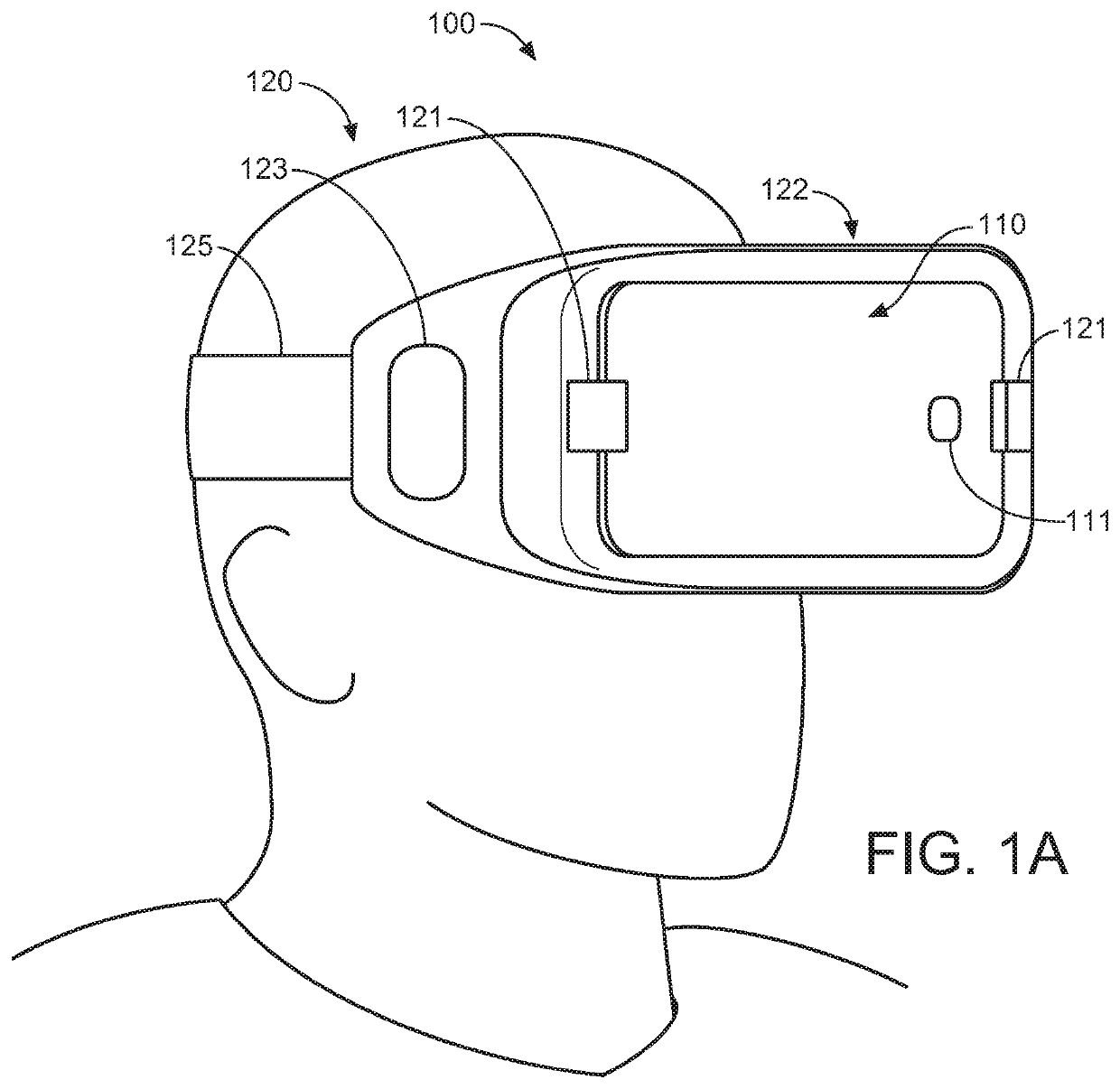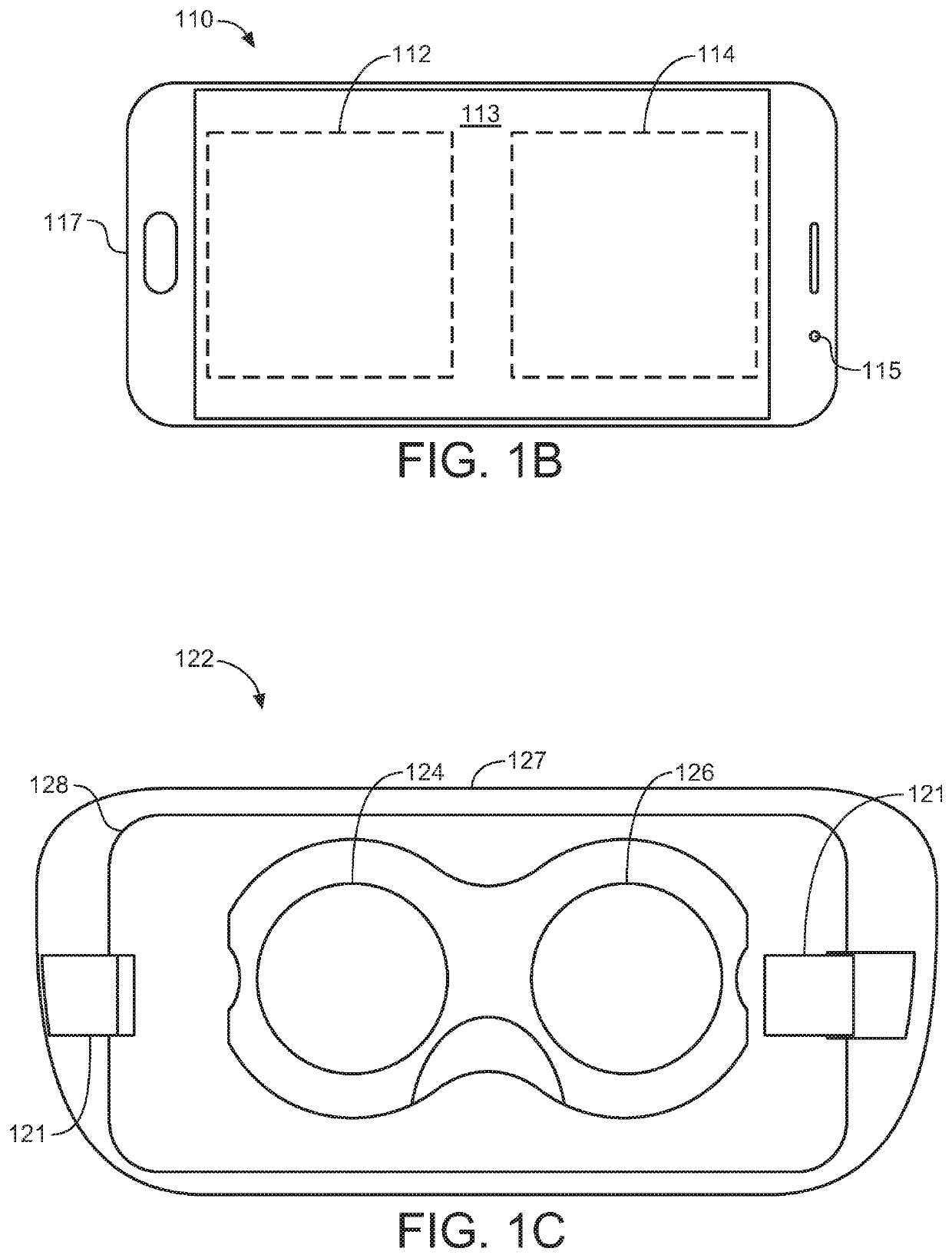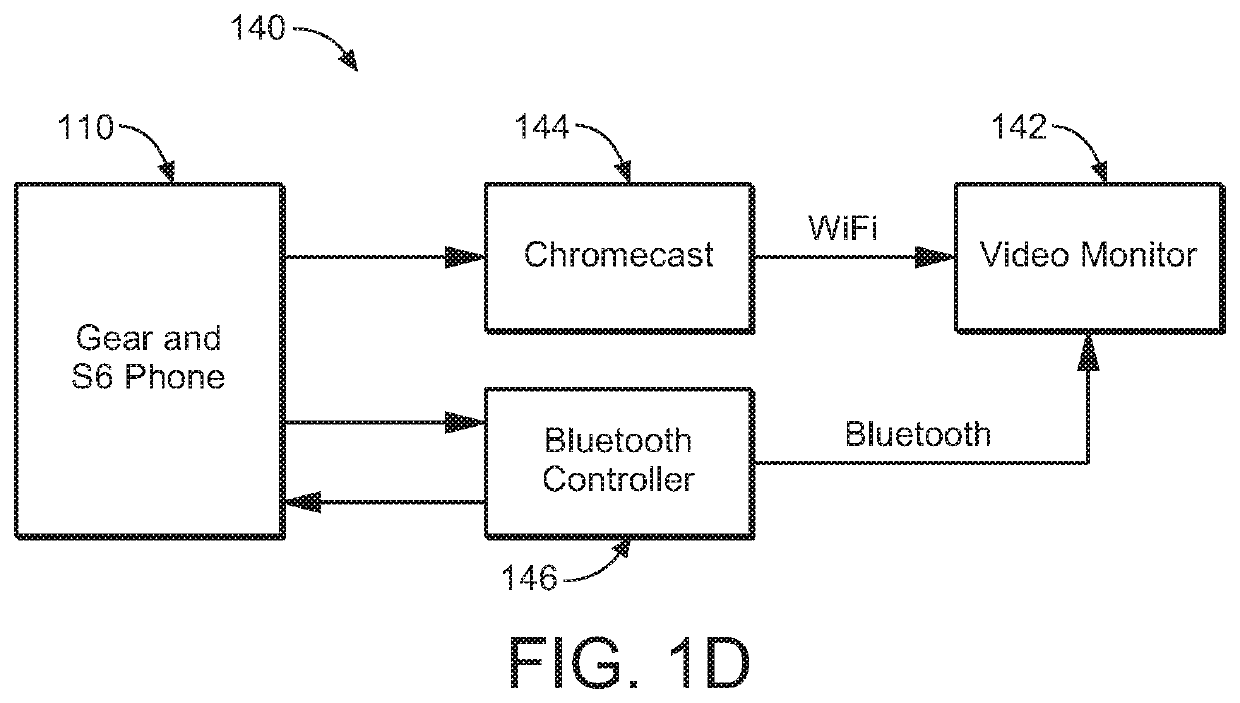Methods and Åpparatus for Compensating for Retinitis Pigmentosa
a technology of retinitis pigmentosa and compensating system, applied in the field of vision enhancement system and methods, can solve problems such as difficulty in mobile activities, visual scene obscured, and difficulty in reading
- Summary
- Abstract
- Description
- Claims
- Application Information
AI Technical Summary
Benefits of technology
Problems solved by technology
Method used
Image
Examples
Embodiment Construction
[0020]Certain embodiments of the inventive vision-enhancement system described herein include: 1) a video camera to capture the scene that would be in the user's field of view if the user was not wearing the system; 2) a processor to image process the video of the captured scene; and 3) a screen to present the processed video images to the user's eyes. The modified video image compensates for the user's particular vision problem, such as tunnel vision, by providing more of the central image of interest to the more active, less impacted portions of the user's eyes, while retaining the peripheral context of the scene. Thus, the image of the of the scene is presented to the user according to an image transformation that maps the captured image, pixel-by-pixel, to an image that presents a smaller field of view than if it were viewed without the system and is thus more useful to the user.
[0021]In one embodiment, minified images are presented to the user of the vision-enhancement system. ...
PUM
 Login to View More
Login to View More Abstract
Description
Claims
Application Information
 Login to View More
Login to View More - R&D
- Intellectual Property
- Life Sciences
- Materials
- Tech Scout
- Unparalleled Data Quality
- Higher Quality Content
- 60% Fewer Hallucinations
Browse by: Latest US Patents, China's latest patents, Technical Efficacy Thesaurus, Application Domain, Technology Topic, Popular Technical Reports.
© 2025 PatSnap. All rights reserved.Legal|Privacy policy|Modern Slavery Act Transparency Statement|Sitemap|About US| Contact US: help@patsnap.com



